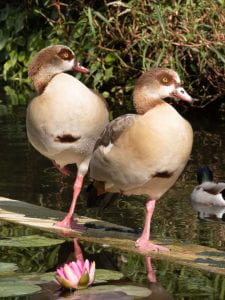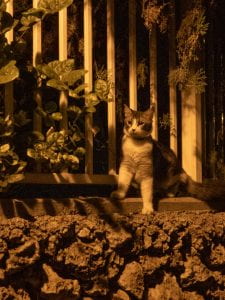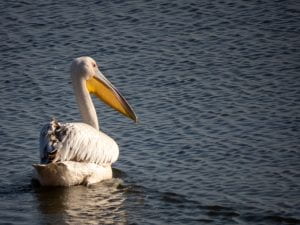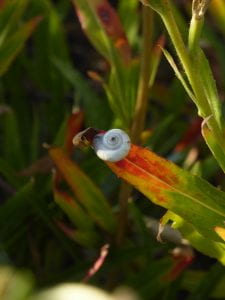
“The Children’s Bible” by Lydia Millet
WOW.
This is certainly a clever book that packs a punch.
Remember when Greta Thunberg thundered:
“My message is that we’ll be watching you. This is all wrong. I shouldn’t be up here. I should be back in school on the other side of the ocean. Yet you all come to us young people for hope. How dare you. You have stolen my dreams and my childhood with your empty words. Yet I am one of the lucky ones. People are suffering.”
In case you were wondering how exactly ignoring climate change/not protecting the planet steals children’s futures, Lydia Millet spells it out for you in a very clever way, using the familiar framework of well-known stories from the Bible, as told by children. You know there’s no happy ending here but you can’t stop reading…
Gripping, clever, and so scary as it is all too real for comfort.

The Second Sleep by Robert Harris
After the previous book, I was looking for something different to read next. When I saw this book by Harris I knew I would get a fast-paced tale, full of suspense, all told within a historical framework. So I just began it without knowing a thing about the book.
While the book is certainly all of that, the history part is actually set in the future, 800 years after the apocalypse!
This time Nature recovers and survives, but the human race is having a much harder time bouncing back. Not many people survived because (as the author is wont to remind us) people who cannot produce food are only 6 meals away from starvation when technology collapses completely…
800 years later finds Britain back in the Middle Ages with an all-powerful Church who has outlawed science and technology – that brought about the end of the world, so it’s obviously evil, right?
Our heroes are, naturally, a very curious bunch who are looking for answers the Church won’t provide.

The Narrowboat Summer by Anne Youngson
There is some calming magic in Youngson’s writing style, I began to feel it by page two!
Here nature is relaxing. When you navigate a narrowboat through Britain’s canals and locks, you must adjust to a slower pace of life, with plenty of time for contemplating and looking at your surroundings. Spending time outdoors isn’t some event you plan for once a month.
No one is rejecting technology in this book or even complaining about it. Rather the necessity of making nature a part of your daily life in some way or another is emphasized as having a strong connection to well-being.
If you haven’t read anything by Anne Youngson, start with “Meet Me at the Museum”. That one is much better but I still enjoyed reading this one too.

168 Hours: You Have More Time Than You Think by Laura Vanderkam
The title is great clickbait but resist temptation.
Don’t read this book.
While the author only lets the word “lazy” slip once, it resonates pretty loudly in the book. It’s not clear whether she studied human nature or Mr. Spok’s Vulcan character.
While I do agree with certain very specific points Vanderkam makes, I reject her overall attitude completely. Not everything you do is about excelling. You do not have to focus only on the hobby you are good at and hone it to perfection – it’s perfectly fine to enjoy dancing or playing the guitar even if you are truly bad at it. Or just dabble in photography…
Your volunteer work is worthwhile even if you happily remain the one who carries the boxes of donated clothes for years and don’t even think about joining the board of trustees.
Worse, Vanderkam floored me when she was talking about children and the home. Was she living in a different world from mine? To be fair, she truly emphasizes the importance of parents spending time with their children. No argument there.
BUT…
How can she discuss managing to stick to your rigid schedule dividing work time and parent/child time, while ignoring the mornings when your mind is mush because you were up half the night with a teething baby, a sick child, or one who just has nightmares? Sleepless nights for so many parents are more than twice-yearly events that playing catch up over the weekend can solve all issues.
Then there’s the part about food.
I am truly respectful of anyone who makes a conscious decision to rely heavily on ready-made frozen or tinned food as meals. Everyone has to balance his/her life choices, I can understand that. However, calling such food healthy and nutritious is beyond my comprehension.
In short – skip this one and read the next one.

Naomi’s Photos
Atomic Habits by James Clear
Unlike the previous book, I felt that this book was very relatable.
No wonder so many people recommend it, particularly to teachers! I see many quotes referring to it.
James Clear presents his methods for creating habits (or breaking bad ones) in small steps with realistic examples. Not only does he not expect you to constantly have lofty goals, but he also emphasizes the process. I had never realized how much focusing on the process (as opposed to just the final goal ) could serve as a motivating factor.
Throughout the book Clear repeats and summarizes his four principles, again and again, highlighting how they fit together. I found this to be helpful.
I haven’t had a chance to try out anything in class yet. Or actually, perhaps I have, at least to some degree. While Clear focuses on what you do for yourself, the book “Switch” by Heath and Heath discusses some of the same points from the perspective of making the habit/ behavior you hope your employees/students do be the easiest choice available. In that respect, I think the books complement each other.
I also enjoy Clear’s brief weekly newsletter – reminds me of what I have read.
I have no shiny new habits to share.
Yet.
But I’m blogging more regularly again!